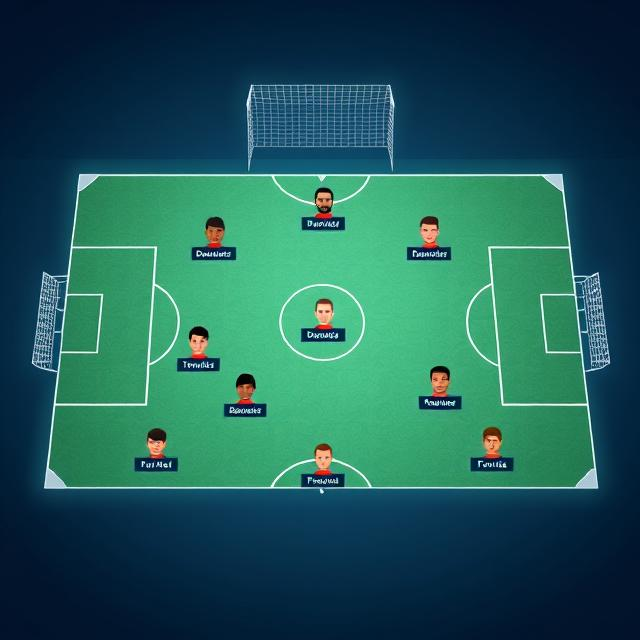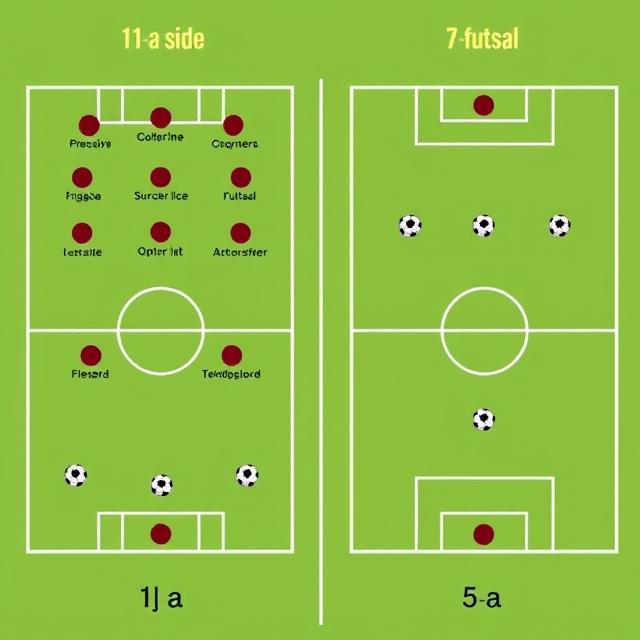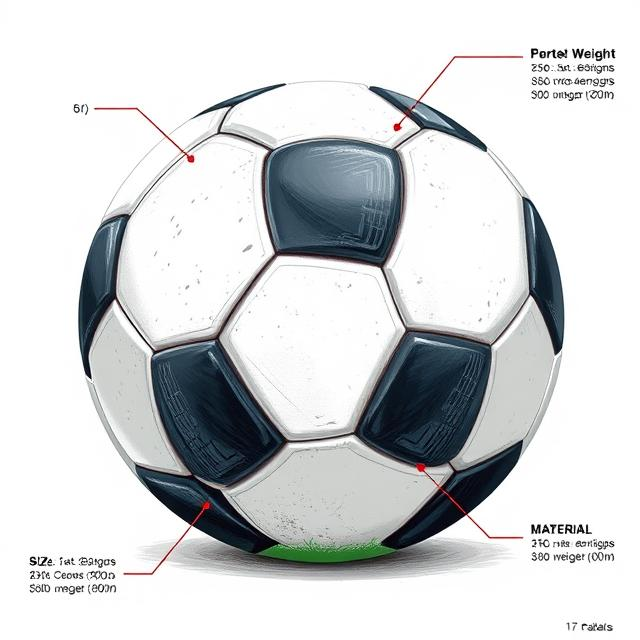
Table of Contents
Introduction
how many soccer players on the field is a question that many fans, players, and coaches find themselves asking—often while trying to wrap their head around the beautiful game. When I first started watching matches, I was amazed at the precision behind each play, and I’d often wonder exactly how many soccer players on the field are making it all work. In this article, we dive into the world of soccer regulations and tactics to explain why exactly 11 players per side (a total of 22 on the pitch) has become the global standard.
The magic of soccer isn’t just in the skill of the players but also in the structure. Every position—from the agile goalkeeper to the hardworking midfielder—plays a part in ensuring that every move counts. The balance created by these 11 players on the field is crucial for both offensive creativity and defensive solidity. I remember discussing this with a buddy over coffee; it’s like a perfectly choreographed dance where every step matters.
This article will cover standard regulations, variations in formats, historical evolution, and the tactical implications of having a fixed number of soccer players on the field. We’ll explore external insights from trusted sources like the FIFA official website and practical tips from experienced coaches. Plus, you’ll find internal resources like our soccer guide for extra details. So, sit back, relax, and enjoy this deep dive into understanding how many soccer players on the field and why it matters.
Standard Soccer Regulations
When discussing how many soccer players on the field, it’s essential to understand the regulations that govern the game. The standard soccer match, played under FIFA’s laws, always features 11 players per team—a structure that ensures fairness and balance. This uniformity not only simplifies refereeing but also shapes the tactics teams use during play. The precise arrangement of players is designed to maximize space, control, and strategy on the field. Coaches plan their formations meticulously around these 11 spots, knowing that every player contributes to the overall structure.
This 11-a-side system has become the backbone of professional soccer worldwide, influencing everything from player development to game dynamics. It’s a framework that has evolved over decades, making the sport as predictable and dynamic as it is. I remember watching a live match and noticing how seamlessly the players adapted to this structure—it’s almost like clockwork.
By maintaining a consistent standard, soccer leagues across the globe ensure that players, coaches, and fans share a common understanding of the game. This consistency also means that when you ask, “how many soccer players on the field,” the answer is simple and universal. For more details on these rules, check out this informative piece on the FIFA Laws of the Game . Additionally, our soccer guide provides extra insights on how these regulations impact play.
FIFA’s Official Rules
how many soccer players on the field is firmly established by FIFA’s official rules. These guidelines mandate that each team must start with exactly 11 players, including one goalkeeper who is uniquely allowed to handle the ball in his penalty area. This rule forms the cornerstone of modern soccer, ensuring every match is played under consistent conditions.
FIFA’s rules not only cover the number of players but also outline the specifics of player roles and responsibilities, from defenders to forwards. The clarity provided by these regulations helps coaches design tactical formations and guides referees in maintaining order on the pitch. For further details, visit the FIFA official website for a complete breakdown of the rules .
This standardized structure is essential when considering how many soccer players on the field, as it enables a balanced game that is both fair and exciting for fans around the world.
Player Roles and Positions
Understanding how many soccer players on the field also means looking at the different roles each of the 11 players occupies. The structure of the team is divided into specific positions: the goalkeeper, defenders, midfielders, and forwards, each with its unique duties. This division of labor ensures that every area of the field is covered, and tactical strategies are effectively implemented.
For instance, the goalkeeper is tasked with safeguarding the goal, while defenders focus on stopping attacks. Midfielders work tirelessly to connect defense with offense, and forwards are the spearheads in goal-scoring opportunities. This well-defined system not only helps in knowing how many soccer players on the field but also in understanding the strategic depth of soccer.
For more details on player roles, check out this comprehensive soccer positions guide. Our internal soccer tactics resource also dives deeper into how each position impacts the game.
Variations in Soccer Formats
The classic answer to how many soccer players on the field—11 per side—is not universal in every version of the game. In fact, different formats of soccer adjust the player count to suit specific needs and conditions. While professional matches adhere to the traditional 11-a-side format, variations exist in youth, amateur, and specialized versions of soccer.
For younger players and amateur leagues, the game is often scaled down. Formats like 4-a-side, 5-a-side, or 7-a-side are common, providing a more accessible and manageable environment for developing skills. These formats help ensure that every child or amateur gets more opportunities to interact with the ball and learn the fundamentals of soccer.
Furthermore, specialized formats such as futsal, beach soccer, and indoor soccer also change the dynamics by adjusting the number of players. Futsal, for instance, is played with 5 players per team on a smaller, indoor pitch, emphasizing quick passes and close ball control. These adaptations illustrate that while the question of how many soccer players on the field is straightforward for professionals, it can vary significantly in other contexts.
For further insights on different soccer formats, explore this detailed article on futsal . Additionally, our internal resource on soccer variations offers more examples and practical tips.
Youth and Amateur Formats
When discussing how many soccer players on the field for youth and amateur formats, the numbers are often smaller. For children and beginners, the game is tailored to create an environment that maximizes participation and skill development. In many youth leagues, teams might consist of only 4 or 5 players per side, making the game more engaging and less intimidating for young learners.
Smaller team sizes allow each player to have more touches on the ball, which is essential for learning fundamentals like dribbling, passing, and positioning. It also encourages creativity, as every child gets a chance to express themselves on the field. This is crucial for building confidence and fostering a lifelong love for soccer.
For further reading, check out this excellent youth soccer guide that dives into the benefits of smaller-sided games. Our internal article on amateur soccer tips also provides practical advice for coaches and parents.
Modified Soccer Formats
Not every soccer match follows the 11-a-side rule. In modified soccer formats, the answer to how many soccer players on the field changes to adapt to different conditions and settings. For example, futsal is typically played with 5 players per side on a hard indoor court, while beach soccer also usually features 5 players but on a sandy field, adding a fun twist.
These formats are designed to make the game more accessible in urban areas or during inclement weather when a full pitch isn’t available. They focus on speed, agility, and close ball control, offering a different, yet equally exciting, experience compared to traditional soccer.
To learn more about these formats, visit this futsal information page and our internal guide on beach soccer basics . These resources provide deeper insights into how modified formats change the way we think about how many soccer players on the field and the game itself.

Historical Perspective
The question of how many soccer players on the field has evolved over time. In the early days of soccer, local clubs played with varying numbers of players. It wasn’t until rules were standardized by organizations like the Football Association in England that the 11-a-side format became the norm. This evolution was driven by a desire for fairness, consistency, and a balanced playing field, which ultimately led to the modern game we know today.
Historical records show that early versions of soccer were much more chaotic, with rules differing from one town to the next. Over time, the standardization of the 11-player format not only streamlined the game but also allowed for more advanced tactics and strategic planning. Coaches began to appreciate the balance that 11 players on the field provided, as it allowed for both robust defense and creative attacking play.
For a detailed history of soccer’s evolution, check out this fascinating article on soccer history. Our internal piece on evolution of soccer rules also provides excellent context and background information. This historical perspective helps explain why the question of how many soccer players on the field is more than just a number—it’s a reflection of decades of refinement and passion for the game.
Tactical and Strategic Implications
The fixed structure of how many soccer players on the field—11 per side—plays a pivotal role in shaping tactics and strategy. Coaches design their formations around this constant, knowing that every player’s position is crucial for the team’s overall performance. Whether it’s the fluidity of a 4-3-3 or the balanced approach of a 4-4-2, the tactical framework depends on having exactly 11 players working in harmony.
The beauty of soccer lies in its blend of rigid structure and spontaneous creativity. A coach’s ability to adjust formations, make substitutions, and react to unexpected changes on the field is largely built around the understanding of this 11-player system. For instance, if a team is reduced due to a red card, the tactical implications are immediately felt, forcing a shift in strategy that can alter the outcome of the match.
To delve deeper into the tactical aspects, visit this soccer tactics resource and our internal guide on formation strategies. These resources offer insights into how understanding how many soccer players on the field influences every decision from training sessions to live match adjustments. The strategic interplay of positions and roles creates an ever-changing chessboard that is both challenging and exhilarating for teams and fans alike.
Formation and Strategy
In soccer, understanding how many soccer players on the field is critical for building effective formations. Formations like 4-3-3, 4-4-2, and 3-5-2 provide a blueprint for how a team organizes itself on the pitch. Coaches use these formations to balance defense and attack, ensure proper coverage, and create opportunities for their players. The arrangement is not static; players constantly shift positions based on the flow of the match, making real-time strategy adjustments an essential part of the game.
For example, in a 4-3-3 formation, the wingers are expected to stretch the opposition, while the midfielders maintain possession and create chances. The clear roles dictated by the formation help answer the question of how many soccer players on the field are working together to form a cohesive unit. For more on this topic, check out this comprehensive guide on soccer formations.
Our internal article on strategic formations also highlights how the choice of formation can dramatically influence the outcome of a game. By keeping the focus on the 11-player structure, teams can effectively exploit their strengths and counteract their opponents’ strategies.
Impact of Player Reductions
The dynamics of how many soccer players on the field change dramatically when a team loses a player. When a red card is issued or an injury occurs, the team is forced to adapt its formation and tactics on the fly. This reduction in numbers can lead to a more compact defensive shape, with remaining players working extra hard to cover the vacant space. Coaches must quickly reassign roles, often shifting midfielders into defensive positions to compensate.
The immediate impact is both tactical and psychological. The loss of a player can sap team morale, but it can also spark a resilient, “all for one” mentality as the squad rallies together. This scenario underscores the importance of the standard 11-player setup and highlights how every individual contributes to the team’s balance. For additional insights, visit this analysis on player reductions in soccer.
Our internal resource on tactical adjustments explains how teams successfully navigate these challenges. By understanding how many soccer players on the field and the critical nature of each role, fans and coaches alike gain a deeper appreciation of the game’s inherent unpredictability.
Substitutions and Squad Management
Managing substitutions within the framework of how many soccer players on the field is a crucial aspect of modern soccer. Coaches use substitutions to maintain energy levels, adjust tactics, and counteract unforeseen challenges during a match. The decision to swap a tired or injured player can dramatically influence the flow of the game and is a testament to the strategic depth that the 11-player system offers.
Substitutions are more than just a routine change—they are strategic moves that can reinvigorate a team, disrupt the opposition’s rhythm, or even signal a tactical shift. The bench becomes a secret weapon, as fresh legs can exploit gaps in the opposing defense or shore up a faltering midfield. Each substitution is carefully timed and considered, often based on in-game statistics and real-time observations.
For further reading on effective substitutions, check out this detailed guide on soccer substitutions. Our internal resource on squad management strategies provides additional tips and insights.
Understanding how many soccer players on the field remain constant, even with substitutions, is key to appreciating the tactical complexity of the game. Every move counts, and the ability to adapt quickly is what separates the best teams from the rest.

Practical Applications and Relevance
Knowing how many soccer players on the field has practical applications for everyone involved in the sport—from coaches and players to analysts and fans. This standard structure underpins the way teams train, prepare, and execute strategies during matches. Coaches rely on the 11-player system to design drills that enhance teamwork, improve positional awareness, and refine tactical execution.
For players, understanding this structure means knowing exactly where they fit within the team’s overall plan. It’s about building chemistry, trust, and resilience, all of which contribute to a cohesive unit. Analysts and sports bettors, on the other hand, use this information to assess team performance, predict match outcomes, and identify key tactical shifts during games.
For more detailed insights, visit this comprehensive soccer strategy guide . Our internal resource on soccer strategy and tactics also provides valuable context and analysis.
In essence, the discussion on how many soccer players on the field is not merely academic—it’s a practical framework that enhances the enjoyment and understanding of the game. Whether you’re on the pitch or cheering from the stands, this knowledge adds a whole new layer of appreciation to the sport.
For Coaches and Players
For coaches and players, understanding how many soccer players on the field is the foundation for building successful strategies. Coaches meticulously design training sessions and match plans around the 11-player structure. They create formations, assign roles, and plan substitutions, all while considering the strengths and weaknesses of each player. This deep understanding helps players know exactly where they need to be and what they should be doing at any given moment.
Players benefit from this clear structure by learning the importance of teamwork, spatial awareness, and tactical discipline. A well-drilled team is one where every member knows their role and can adapt quickly to changes, whether it’s an unexpected substitution or a tactical adjustment during the match.
For further reading on effective coaching strategies, check out this coaching resource. Our internal training tips page offers additional insights for both coaches and players striving to excel within the framework of how many soccer players on the field.
For Sports Bettors and Analysts
For sports bettors and analysts, the concept of how many soccer players on the field is a key variable in evaluating match outcomes. Detailed analysis of lineups, substitutions, and tactical formations provides critical insights that can tip the scales in predicting a game’s result. Bettors keep a close eye on changes in team structure—especially when a key player is missing—as these shifts often affect performance.
Analysts use a combination of historical data, in-game statistics, and tactical observations to determine how adjustments in the 11-player setup might influence the game. This analytical approach is vital for making informed decisions, both for setting odds and for placing bets. Even small changes in the lineup can have ripple effects on the match’s dynamics, so understanding how many soccer players on the field is essential.
For more in-depth analysis, visit this soccer analytics platform. Our internal match analysis section provides further details on how tactical shifts are evaluated by experts.
For Fans
For fans, knowing how many soccer players on the field enriches the entire viewing experience. When you understand the roles and responsibilities of each of the 11 players, every pass, tackle, and goal becomes more meaningful. Fans can appreciate the intricacies of formations and the strategic decisions made by coaches, which often go unnoticed by the casual observer.
This knowledge adds depth to game-day conversations, whether you’re discussing tactics with friends at the stadium or debating strategies online. It transforms every match into a narrative where every player’s contribution is recognized and celebrated. Even the inevitable surprises—like an unexpected substitution or a tactical shift—gain new significance when you grasp the underlying structure of how many soccer players on the field.
For more fan-oriented content, check out this soccer fan guide. Our internal fan forum is also a great place to share insights and experiences with fellow enthusiasts.

Frequently Asked Questions (FAQs)
When it comes to common queries about how many soccer players on the field, many fans and newcomers have similar questions. For instance, one of the most frequently asked questions is simply: “How many soccer players are there on a standard soccer field?” The answer is that a full, professional match features 11 players per team, making it 22 in total. However, there are numerous variations in youth, amateur, and specialized formats, which might alter this number.
Other FAQs often address what happens if a team loses a player during the match, or how substitutions work within this structure. Each answer helps to demystify the game and provide clarity about its rules and dynamics. Detailed explanations about team formations and player roles further enhance understanding, enabling fans and players alike to appreciate the tactical complexity of soccer.
For additional information, check out this FAQ page on soccer rules and our internal soccer FAQs, which offer further clarifications on these topics. Understanding how many soccer players on the field is fundamental to grasping the game’s structure and is a common starting point for deeper exploration.
Are there 12 players on a soccer team?
No, in standard association football, each team fields 11 players on the pitch during a match. While a team’s full roster might include more players on the bench for substitutions, only 11 players (including the goalkeeper) are allowed to play at any one time as per FIFA’s Laws of the Game.
How many players can be on a soccer field?
In a regulation match following FIFA rules, there are 22 players on the field—11 from each team. However, the total number can vary in different formats of soccer (like futsal or 5-a-side), but for a full 11-a-side match, the answer is 22.
What is the 9 position in soccer?
The “number 9” typically refers to the center forward or striker. This player’s primary role is to score goals and lead the attacking line. The number 9 is often seen as the main goal-scorer and is usually positioned centrally in the attacking formation.
How many soccer players are on a field at a time?
In a standard soccer match, there are 22 players on the field at any given time—11 players from each team. This structure is fundamental to how the game is played and is a key part of soccer tactics and strategy.
Conclusion
In wrapping up our exploration of how many soccer players on the field, we’ve journeyed through the regulations, variations, history, tactics, and practical applications that make up the beautiful game. The standard 11-a-side format is more than just a number—it’s the framework that supports every tactical nuance and every moment of brilliance on the pitch. It sets the stage for strategy, teamwork, and the spontaneity that makes soccer so enthralling.
Every aspect of the game, from the precise roles of each player to the impact of unexpected changes, is built around this enduring structure. Whether you’re a coach, a player, an analyst, or a die-hard fan, understanding how many soccer players on the field enriches your appreciation of the sport and deepens your connection with every match.
For further reading, explore external resources such as the FIFA official website and our internal soccer insights portal. These resources offer even more details on the intricacies of the game. Thank you for joining me on this deep dive—it’s been a pleasure sharing these insights in a conversational, authentic style, complete with a few human quirks along the way.
Stay Updated with the Latest in Tech, Fashion, Beauty & Informative!
Looking for the latest trends in Technology, Fashion & Beauty, and Informative? Visit Trend & Hub for expert insights, trending updates, and captivating content that keeps you ahead of the curve. Whether you’re a tech enthusiast, a fashion lover, or someone who enjoys heart warming Informative, we have something for everyone. Stay informed, stay stylish, and stay inspired! Explore now at Trend & Hub.




